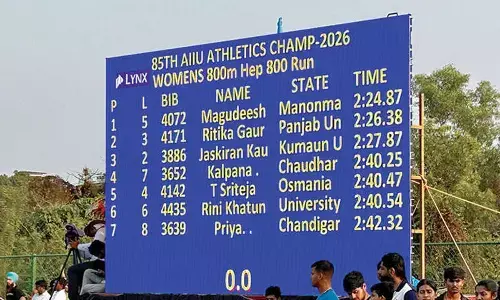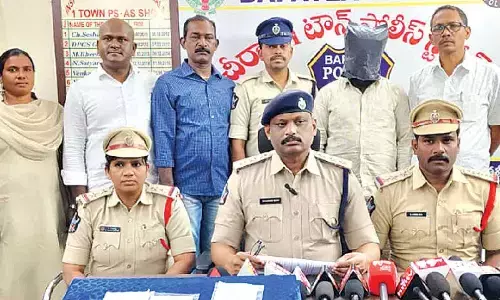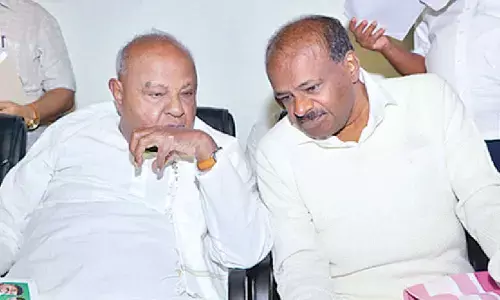A game changer for combating malnutrition, climate change

Regular consumption of millet can significantly improve key nutrition parameters among children and women. VikasChoudhary/CSE
Subsidised cereals distributed under PDS have increased the consumption of excessive starch instead of pulses, legumes, vegetables, nuts and milk, which provide wholesome nutrition
India was ranked 107 of 121 countries in the Global Hunger Index 2022. This is despite the country running the largest food distribution network, which feeds over 800 million people — around 10 per cent of the world's population. Malnutrition continues to be a significant challenge in India even after 75 years of independence. The government introduced the Public Distribution System (PDS) to alleviate hunger by providing staple foods like rice and wheat at a nominal cost to economically weaker households."The rice-wheat centric policies have amplified poor nutritional outcomes," according to eminent economist Jean Dreze. The cereal-based PDS may have reduced hunger, but the problem of malnutrition persists, he underlined.
India is facing the triple burden of malnutrition, obesity and micronutrient deficiencies. The country is home to 224.3 million undernourished people, according to a report released by the Food and Agriculture Organization in 2019-2021. Over 80 per cent adolescents in India suffer from 'hidden hunger', noted a report published by United Nations International Children's Emergency Fund. Hidden hunger is a deficiency of micronutrients that affects health and learning ability and aggravates the vicious cycle of malnutrition and poverty.
Sustainable food
Subsidised cereals distributed under PDS have increased the consumption of excessive starch instead of pulses, legumes, vegetables, nuts and milk, which provide wholesome nutrition. It is high time to adopt nutrient-dense diets. PDS has a crucial role in procuring and distributing a wider variety of traditional and nutritious grains. Small-scale farmers in the dryland and rainfed areas grew millets as part of an intercropping system, along with pulses, legumes, oilseeds and tubers. Millets like barnyard, ragi (finger millet), kodo, foxtail, little, proso and sorghum are known as nutri-cereals due to their richness in dietary fibre, proteins, calcium, iron, magnesium, niacin, amino acids and other micronutrients. Regular consumption of millets can significantly improve key nutrition parameters among children and women. Millets can improve haemoglobin levels and reduce iron deficiency. There has been a growing awareness, particularly among urban consumers, that millets are a powerhouse of nutrition, good for diabetes and obesity and reduce the chances of heart and cardiovascular diseases…
Paddy requires 1,200-1,500 millilitres (ml) of water, whereas millets require just about 600-800 ml water per acre. For farmers depending on rainfed agriculture, millets are a major source of income and nutrition. Millets are smart-food, said Joanna Kane-Potaka, deputy director general of the International Rice Research Institute. "They are a blessing for small-scale farmers facing climate change, suffering from poverty poverty and failing to meet adequate nutrition."
Mainstreaming millets in PDS
Since millets are nutrient-dense cereals with the potential to address India's food and nutrition security, mainstreaming them under PDS could address the challenge of micronutrient deficiency. Many states have introduced millets in their food security programmes. Karnataka became the first state to include jowar and ragi in PDS in July 2015 in accordance with recommendations in the National Food Security Act, 2013…
The Odisha government launched Odisha Millets Mission (OMM) in 2017-2018 to revive millets…OMM has introduced ragi in various social safety net programmes such as PDS, Supplementary Nutrition Programme under ICDS, Mid-Day Meal scheme and tribal hostels. Under PDS, for instance, two kilograms of ragi per ration cardholder was supplied as a rice substitute. During 2017-18 to 2022-23, over five lakh quintals of ragi were distributed to 18,038,187 ration cardholders… "Including millets in PDS would be a game changer for combating malnutrition and mitigating climate change," said professor Srijit Mishra, Indira Gandhi Institute of Development Research, Mumbai. Grains required for distribution under PDS should be procured from farmers at MSP. But there is a need for a comprehensive policy to strengthen the existing system.
Challenges & way forward
At the outset, including millet under PDS and ensuring an elevated MSP may seem like an effective strategy to boost millet production and consumption. But there are several flip sides that need urgent policy attention…Andhra Pradesh undertook a pilot project in 2018, but as procurement was done through the tendering process, the benefits to the farmers were limited. The state government now plans to re-introduce millets into the PDS but through a more equitable process that would benefit both farmers and consumers. "Shifting consumer preferences is key," said Khader Vali, popularly known as India's 'Millet Man'…Decentralised PDS is imperative. Districts should be locally self-sufficient in terms of millet production, procurement, processing and distribution. This will reduce costs of transport and storage, minimise the risk of spoilage during storage and reduce corruption and leakages. OMM has developed the standards for millet processing and value-added machinery and set up processing machinery at panchayat and block levels that are operated and managed by women self-help groups and FPOs.
Such decentralised people-centric approaches have created livelihood opportunities. More research and development are needed to develop efficient machinery for millet that can work in energy-constrained rural areas. The average yield of millets is 1,111 kg per hectare (ha), far less than 2,600 kg for paddy and 3,500 kg for wheat, according to Smart Food, a global initiative led by the ICRISAT.
Promoting agronomic practices, accessibility to quality seed and locally suitable varieties would help in boosting production to balance demand and supply. Through such comprehensive and innovative approaches, PDS can be reformed to include millets. And, with the inclusion of millets in public diets, India may well improve its ranking in the Global Hunger Index.
(Courtesy: https://www.downtoearth.org.in; AbhijitMohanty is a Bhubaneswar-based development professional and freelance journalist. He has reported on sustainable food, climate change, conservation, livelihood and inclusive education with a special focus on tribal and marginalised communities in India and Cameroon; BinduMohanty is the Research Coordinator at RevitalisingRainfed Agriculture Network; Views expressed are the authors' own and don't necessarily reflect those of Down To Earth)











